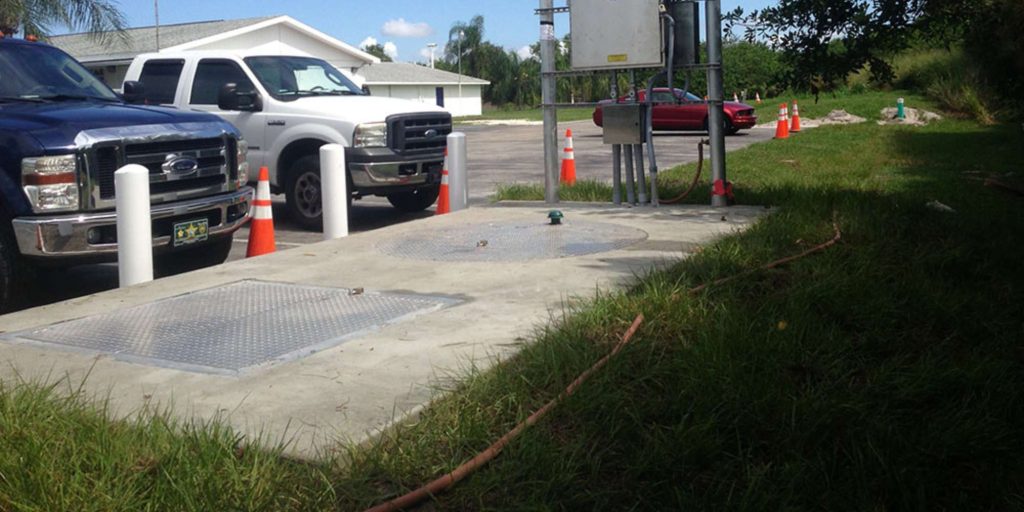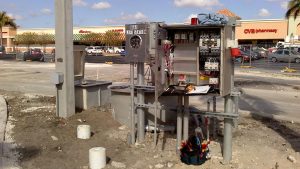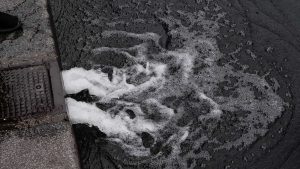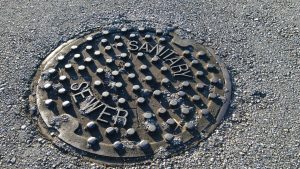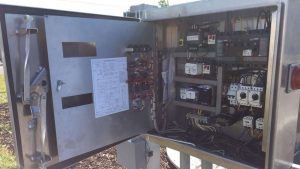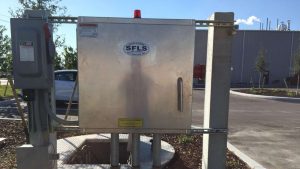What Are Lift Stations?
“What are lift stations?” is one of the most common questions technicians receive. Lift stations – sometimes known interchangeably as pumping stations – are appliances that include a tank, valves, and electrical components that help move wastewater or sewage to higher elevations.
In other words, lift stations facilitate the movement of liquid out of commercial and private properties.
What Does “Head” Mean in Terms of Lift Stations?
“Head pressure” is how much pressure a lift station can deliver.
Professionals determine a station’s “static head” by calculating the height difference between the fluid moved and its end-point (discharge point).
“Friction head” is the amount of friction the liquid creates as it travels through the pipes. The lift station must overcome this resistance with more pressure. Elbows, check valves, and narrow discharge valves can generate more friction.
How Big Should a Force Main Be for Efficient Pumping?
Technicians size the standard diameter of force mains around three to five feet per second. Still, this measurement may not be appropriate for every property type, depending on how much waste it produces. Industrial facilities may need bigger mains if they drain large volumes of water throughout the day.
Some technicians may install wider force mains if a property produces large quantities of solid waste. However, a grinder pump can reduce the need for bigger pipes.
Do I Need a Grinder Pump?
Grinder pumps are essential for breaking down solid materials into liquid waste to prevent clogs in the system. Many lift pump systems come with these mechanisms already integrated into the tank. Grinder pumps are also helpful in reducing the pressure needed to transport liquids.
What Is an Influent Line?
Influent lines are sewage pipes that direct liquid into the wastewater lift station from the property. Technicians typically install these features deep into the ground to avoid freezing pipes.
Why Do Most Properties Need a Lift Station Connection?
Lift stations are the best way to eliminate harmful waste from a property. These appliances are essential for most properties because gravity alone cannot pump the wastewater out of homes.
While many homeowners invest in their own systems, communities sometimes share lift stations. Mobile home parks, resorts, and universities typically have on-site lift stations connected to a primary sewage system.
What Size Tank Do I Need?
Choosing the right lift station pump and basin depends on the size of the property and how much liquid waste residents produce. An installation specialist can determine which size is appropriate after a thorough consultation.
What Do “Simplex” and “Duplex” Lift Stations Mean?
A simplex lift station is a pumping device that contains a single pump. These are ideal for properties that do not produce excessive volumes of liquid waste.
Duplex lift stations contain two pumps and are practical for moving sewage out of larger properties. The extra pump reduces stress on the system, allowing it to perform at optimal capacity.
Industrial facilities may require more complex units for operation. In this case, four or five pumps may be necessary to transport large volumes of waste.
How Long Do Lift Stations Last?
It is common for lift stations to require maintenance every few years. Clogs and the physical separation of pipes are two of the most common damages technicians see.
Upgrades may also be necessary if a system fails to move wastewater to a higher elevation. Generally, a lift station will last 15-20 years with the proper upkeep.
How Can I Monitor the Performance of My Lift Station?
Professional technicians will inspect these installations if property owners notice unusual smells or experience utility backwash. Still, it is possible to monitor the performance of a lift station with cloud-based technology. These accessories track station metrics and record data, taking the hassle out of paperwork for industrial compliance.
What Happens to a Lift Station During Power Outages?
These appliances rely on electricity to produce pressure. If power disruptions occur, pumps will stop functioning without an auxiliary generator or backup power source.
Many Florida residents reported sewage backups and other waste-related emergencies during the city-wide blackouts of Hurricane Irma. This issue sparked a health crisis that encouraged many private and public lift station providers to develop backup solutions for their installations.
Still, not all systems have these fail-safes in place. A lift station technician can inspect these appliances on a system-to-system basis to determine the risk of failure during power outages.
What are lift stations? Learn more with South Florida Lift Stations, Inc. in Ft. Myers, FL. Call us at 239-332-0041.

